
Infrared thermography (IRT), thermal video and/or thermal imaging, is a process where a thermal camera captures and creates an image of an object by using infrared radiation emitted from the object in a process, which are examples of infrared imaging science. Thermographic cameras usually detect radiation in the long-infrared range of the electromagnetic spectrum and produce images of that radiation, called thermograms. Since infrared radiation is emitted by all objects with a temperature above absolute zero according to the black body radiation law, thermography makes it possible to see one's environment with or without visible illumination. The amount of radiation emitted by an object increases with temperature; therefore, thermography allows one to see variations in temperature. When viewed through a thermal imaging camera, warm objects stand out well against cooler backgrounds; humans and other warm-blooded animals become easily visible against the environment, day or night. As a result, thermography is particularly useful to the military and other users of surveillance cameras.
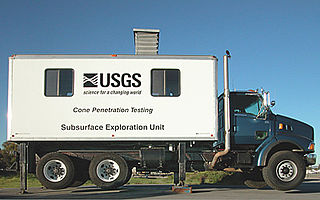
The cone penetration or cone penetrometer test (CPT) is a method used to determine the geotechnical engineering properties of soils and delineating soil stratigraphy. It was initially developed in the 1950s at the Dutch Laboratory for Soil Mechanics in Delft to investigate soft soils. Based on this history it has also been called the "Dutch cone test". Today, the CPT is one of the most used and accepted soil methods for soil investigation worldwide.
Productivity is the efficiency of production of goods or services expressed by some measure. Measurements of productivity are often expressed as a ratio of an aggregate output to a single input or an aggregate input used in a production process, i.e. output per unit of input, typically over a specific period of time. The most common example is the (aggregate) labour productivity measure, one example of which is GDP per worker. There are many different definitions of productivity and the choice among them depends on the purpose of the productivity measurement and data availability. The key source of difference between various productivity measures is also usually related to how the outputs and the inputs are aggregated to obtain such a ratio-type measure of productivity.
Resistance thermometers, also called resistance temperature detectors (RTDs), are sensors used to measure temperature. Many RTD elements consist of a length of fine wire wrapped around a heat-resistant ceramic or glass core but other constructions are also used. The RTD wire is a pure material, typically platinum (Pt), nickel (Ni), or copper (Cu). The material has an accurate resistance/temperature relationship which is used to provide an indication of temperature. As RTD elements are fragile, they are often housed in protective probes.
In economics, total-factor productivity (TFP), also called multi-factor productivity, is usually measured as the ratio of aggregate output to aggregate inputs. Under some simplifying assumptions about the production technology, growth in TFP becomes the portion of growth in output not explained by growth in traditionally measured inputs of labour and capital used in production. TFP is calculated by dividing output by the weighted geometric average of labour and capital input, with the standard weighting of 0.7 for labour and 0.3 for capital. Total factor productivity is a measure of productive efficiency in that it measures how much output can be produced from a certain amount of inputs. It accounts for part of the differences in cross-country per-capita income. For relatively small percentage changes, the rate of TFP growth can be estimated by subtracting growth rates of labor and capital inputs from the growth rate of output.
Sound Transmission Class is an integer rating of how well a building partition attenuates airborne sound. In the US, it is widely used to rate interior partitions, ceilings, floors, doors, windows and exterior wall configurations. Outside the US, the ISO Sound Reduction Index (SRI) is used. The STC rating very roughly reflects the decibel reduction of noise that a partition can provide. The STC is useful for evaluating annoyance due to speech sounds, but not music or machinery noise as these sources contain more low frequency energy than speech.

A piezoelectric sensor is a device that uses the piezoelectric effect to measure changes in pressure, acceleration, temperature, strain, or force by converting them to an electrical charge. The prefix piezo- is Greek for 'press' or 'squeeze'.

The Snell Memorial Foundation is a nonprofit organization created to provide a high quality standard of safety for helmets. Founded in 1957, the foundation is named after William "Pete" Snell, a popular sports car racer who died in 1956 of head injuries he received when the racing helmet he wore failed to protect his head. A group of friends, scientists, physicians, and others joined together to create a group that would promote research and education as well as test and develop standards to improve the effectiveness of helmets.
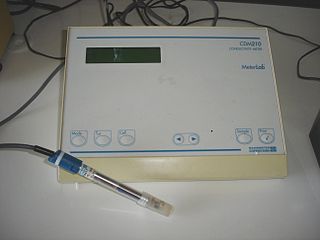
An electrical conductivity meter measures the electrical conductivity in a solution. It has multiple applications in research and engineering, with common usage in hydroponics, aquaculture, aquaponics, and freshwater systems to monitor the amount of nutrients, salts or impurities in the water.
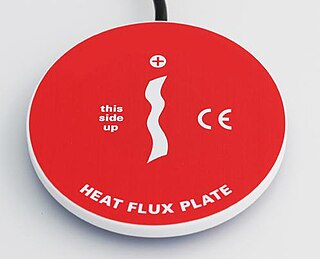
A heat flux sensor is a transducer that generates an electrical signal proportional to the total heat rate applied to the surface of the sensor. The measured heat rate is divided by the surface area of the sensor to determine the heat flux.
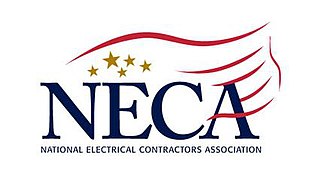
The National Electrical Contractors Association (NECA) is a trade association in the United States representing the electrical contracting industry through advocacy, education, research, and standards development.

Mixed flowing gas (MFG) is a type of laboratory environmental testing for products, particularly electronics, to evaluate resistance to corrosion due to gases in the atmosphere. Mixed Flowing Gas (MFG) test is a laboratory test in which the temperature (°C), relative humidity (%RH), concentration of gaseous pollutants (in parts per billion, ppb or parts per million ppm level), and other critical variables (such as volume exchange rate and airflow rate) are carefully defined, monitored and controlled. The purpose of this test is to simulate corrosion phenomenon due to atmospheric exposure. The electronic product is exposed to gases such as chlorine, hydrogen sulfide, nitrogen dioxide, and sulfur dioxide at levels in the parts per billion range, in a controlled environmental chamber. Test samples that have been exposed to MFG testing have ranged from bare metal surfaces, to electrical connectors, and to complete assemblies. In regards to noble metal plated connector applications, MFG testing has been widely accepted as a qualification test method to evaluate the performance of these connectors.

The international roughness index (IRI) is the roughness index most commonly obtained from measured longitudinal road profiles. It is calculated using a quarter-car vehicle math model, whose response is accumulated to yield a roughness index with units of slope. Although a universal term, IRI is calculated per wheelpath, but can be expanded to a Mean Roughness Index (MRI) when both wheelpath profiles are collected. This performance measure has less stochasticity and subjectivity in comparison to other pavement performance indicators, such as PCI, but it is not completely devoid of randomness. The sources of variability in IRI data include the difference among the readings of different runs of the test vehicle and the difference between the readings of the right and left wheel paths. Despite these facts, since its introduction in 1986, the IRI has become the road roughness index most commonly used worldwide for evaluating and managing road systems.

Tensile testing, also known as tension testing, is a fundamental materials science and engineering test in which a sample is subjected to a controlled tension until failure. Properties that are directly measured via a tensile test are ultimate tensile strength, breaking strength, maximum elongation and reduction in area. From these measurements the following properties can also be determined: Young's modulus, Poisson's ratio, yield strength, and strain-hardening characteristics. Uniaxial tensile testing is the most commonly used for obtaining the mechanical characteristics of isotropic materials. Some materials use biaxial tensile testing. The main difference between these testing machines being how load is applied on the materials.
Agile construction is an integrated system of principles and methods, and a philosophy of doing business adapted to jobsites and overall project delivery in the construction industry. It is born from agile manufacturing and project management, which is mostly used in manufacturing production, automotive and software developing teams. It is the application of the Toyota Production System to the construction industry, with two parallel paths: Measuring and improving productivity, as well as segregating and externalizing work through prefabrication and supply chain management.

Perry (Parviz) Daneshgari is an Iranian-American entrepreneur, engineer and author born in Ahvaz, Iran. He founded MCA, which appeared on the TV Program World Business Review, in 1990 and has written many books and articles in specialized magazines and websites. Perry has an MBA from Wayne State University and a Ph.D. in mechanical engineering from the University of Karlsruhe, as well as B.S. in civil and mechanical engineering from Northwestern University. He specializes in Agile Construction, a way of doing business that focuses on adaptation and quick changes on job sites and production lines.
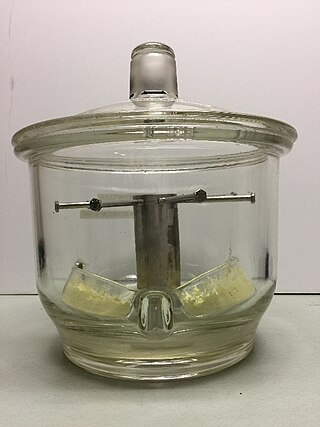
Flowers of sulfur (FOS) testing was developed to determine the porosity of metallic coatings susceptible to sulfur induced corrosion [see below ASTM B809-95(2018)]. Applicable substrates are silver, copper, copper alloys and any other metal or metal alloy with which sulfur will react. For porosity testing, coatings can be single or multiple layers of any metal that is not corroded and sealed by a self-limiting reaction in the reducing sulfur environment of the FOS test. The simplest recommended technique is to identify any porosity of the coating as revealed by the presence of surface spots. These surface spots form where the environmental sulfur has penetrated and reacted with the base metal, producing a metal sulfide. Chalcocite, copper (I) sulfide is dark-grey to black. Silver (I) sulfide is also grey-black.
Heather Jean Patrick is an American physicist. She is a researcher and project lead at National Institute of Standards and Technology. Patrick's research focuses on applications of scattering and reflectance measurements, advanced light sources, and robotics to the characterization and metrology of optical materials.
The industrialization of construction is the process through which construction aims to improve productivity through increased mechanization and automation. The process commonly involves modularization, prefabrication, preassembly, and mass production.












